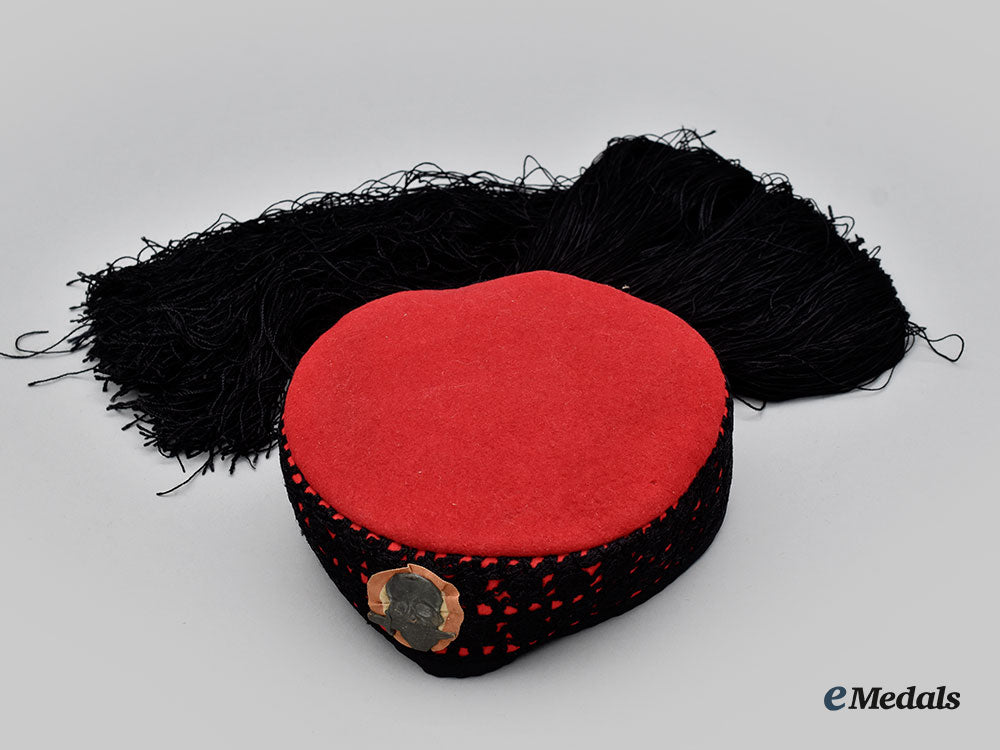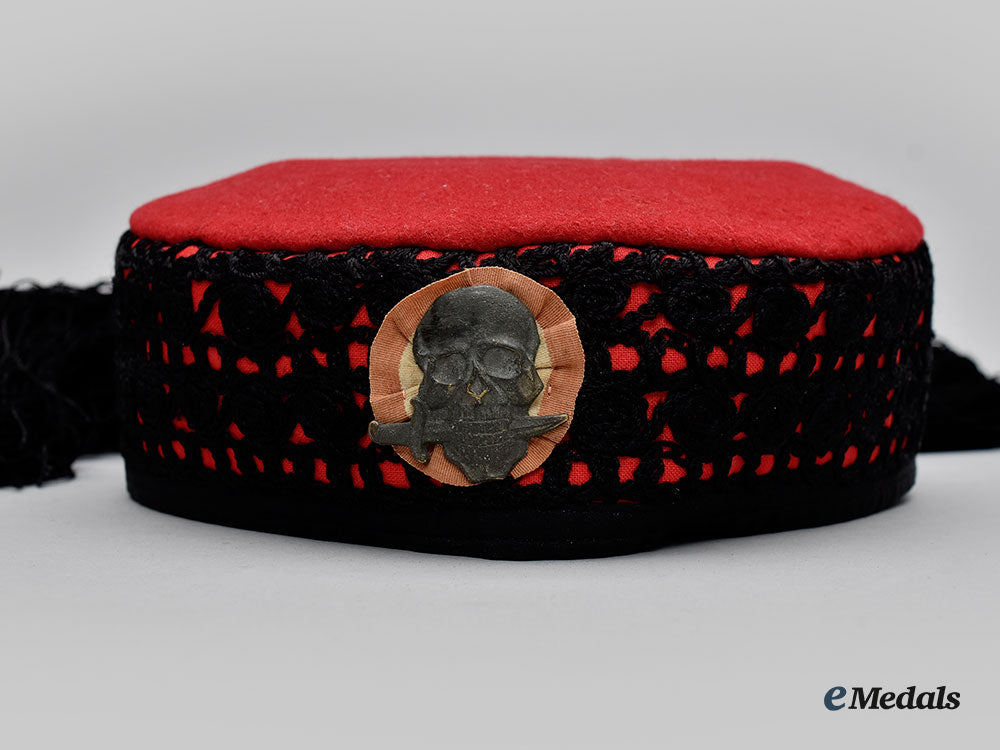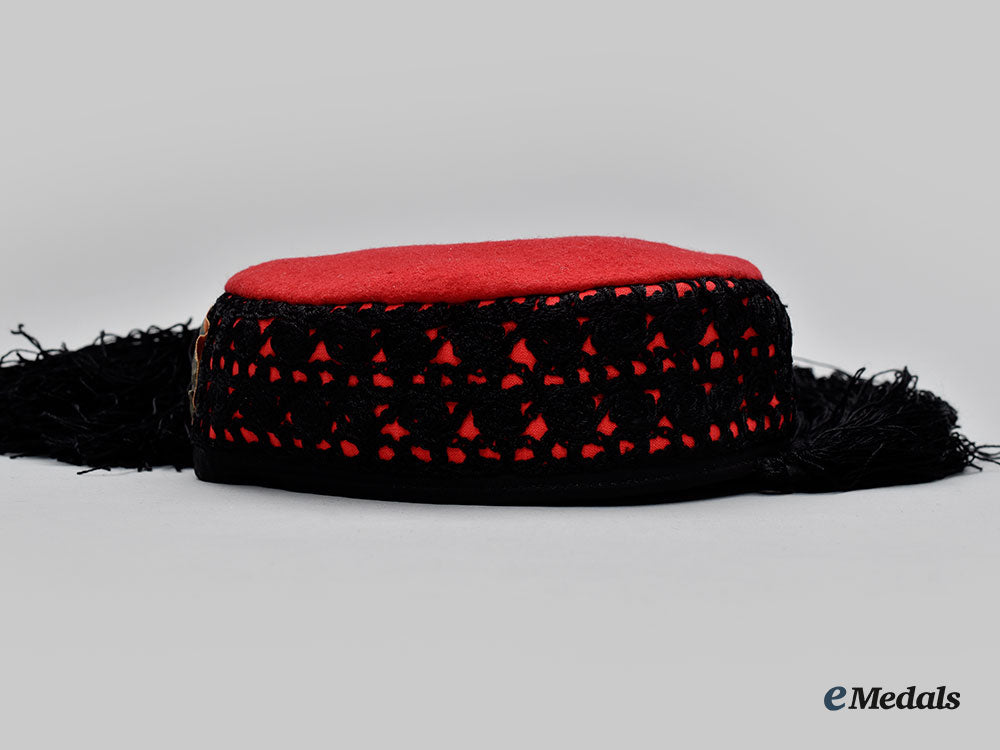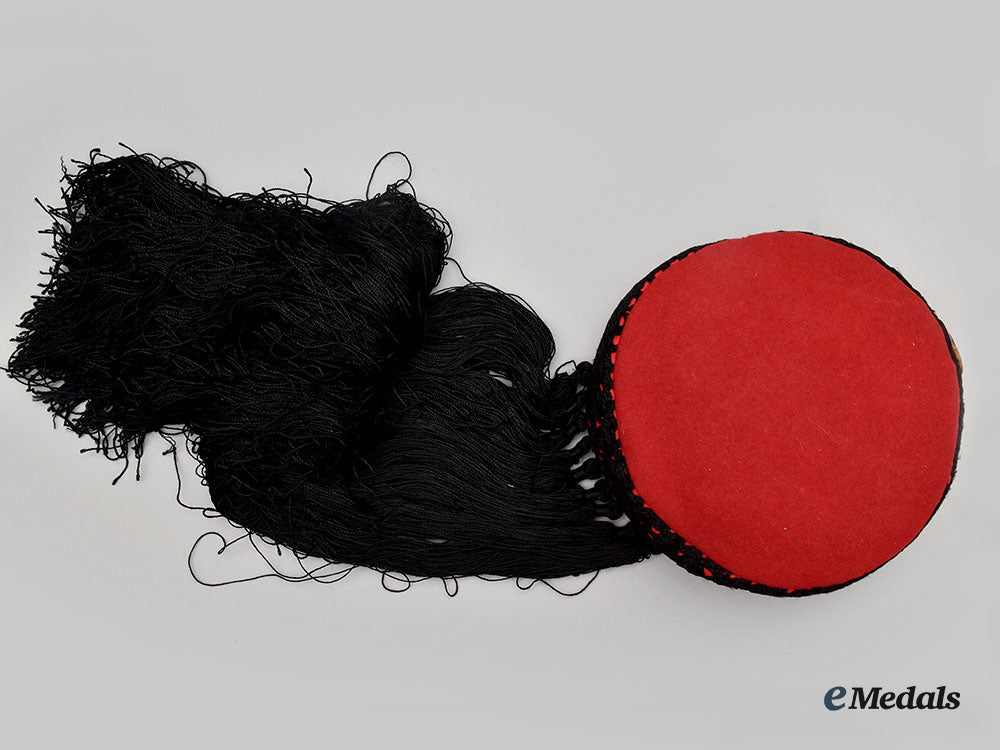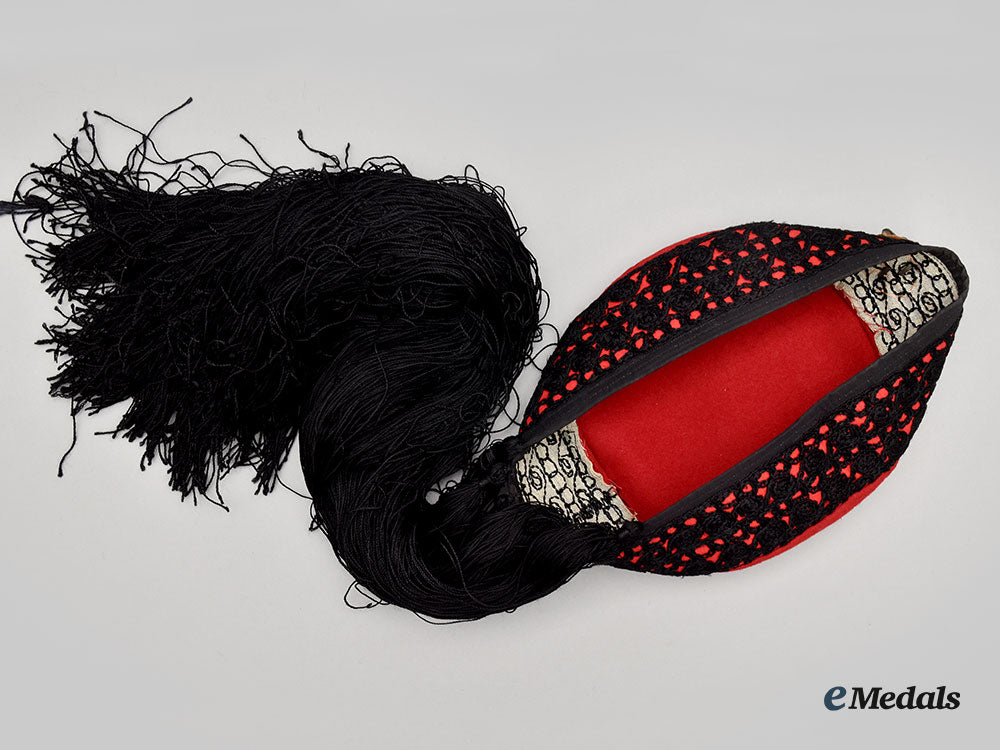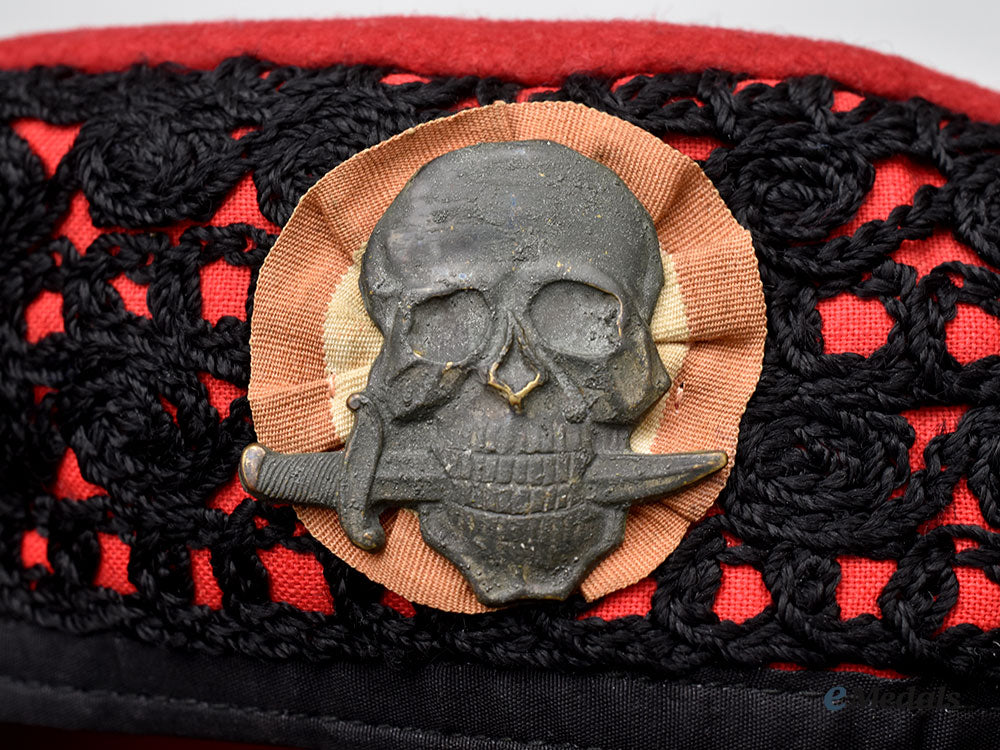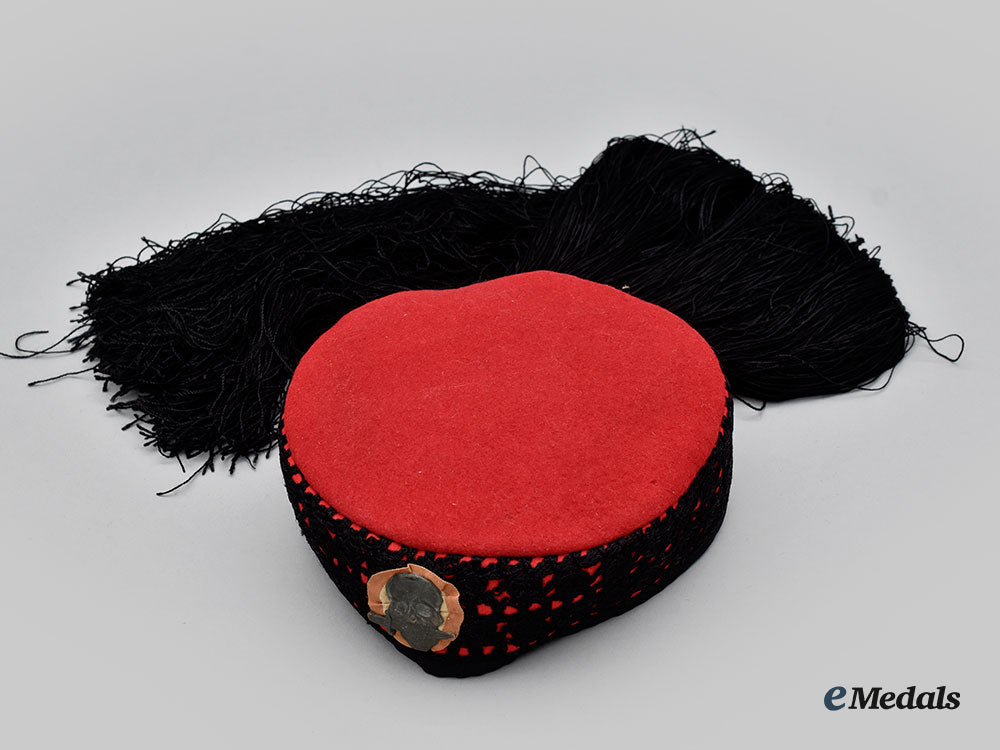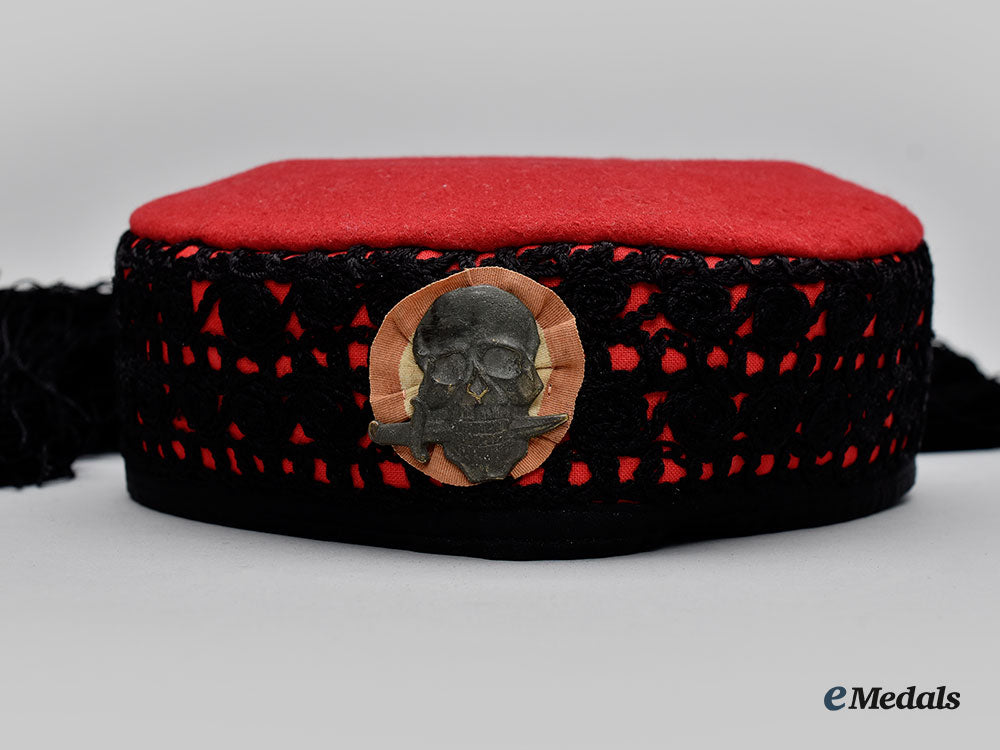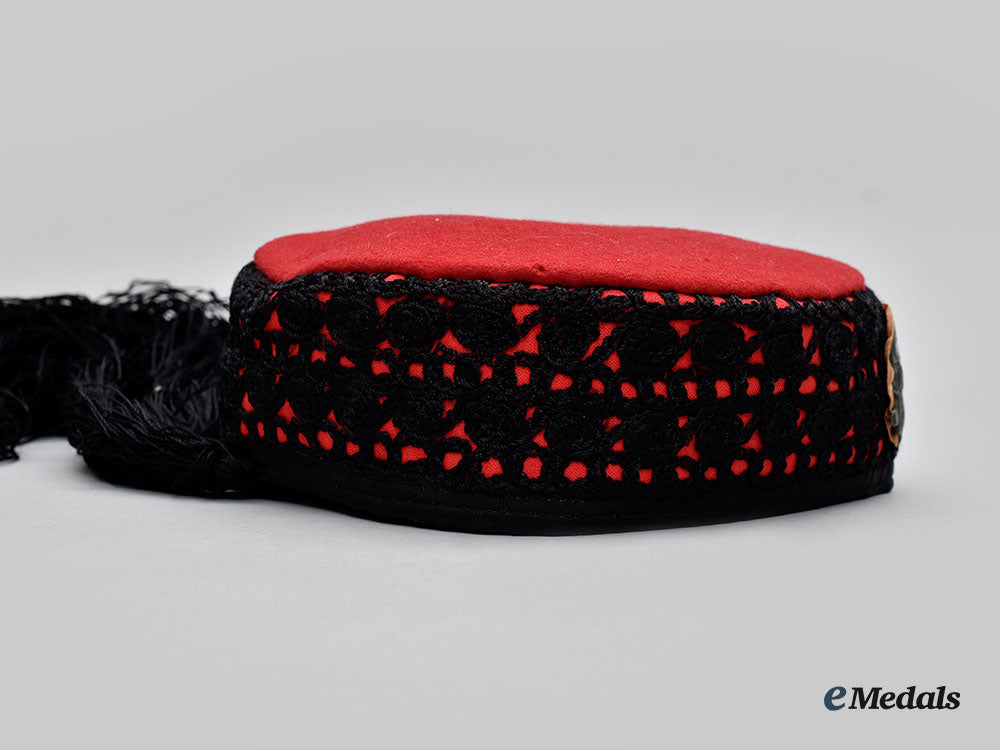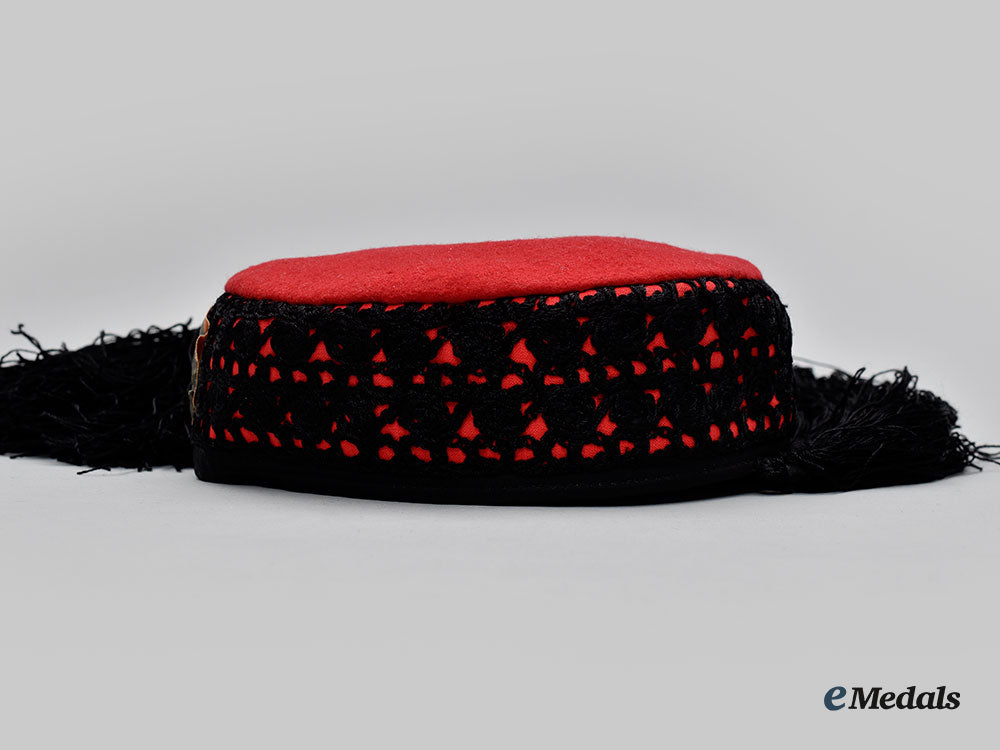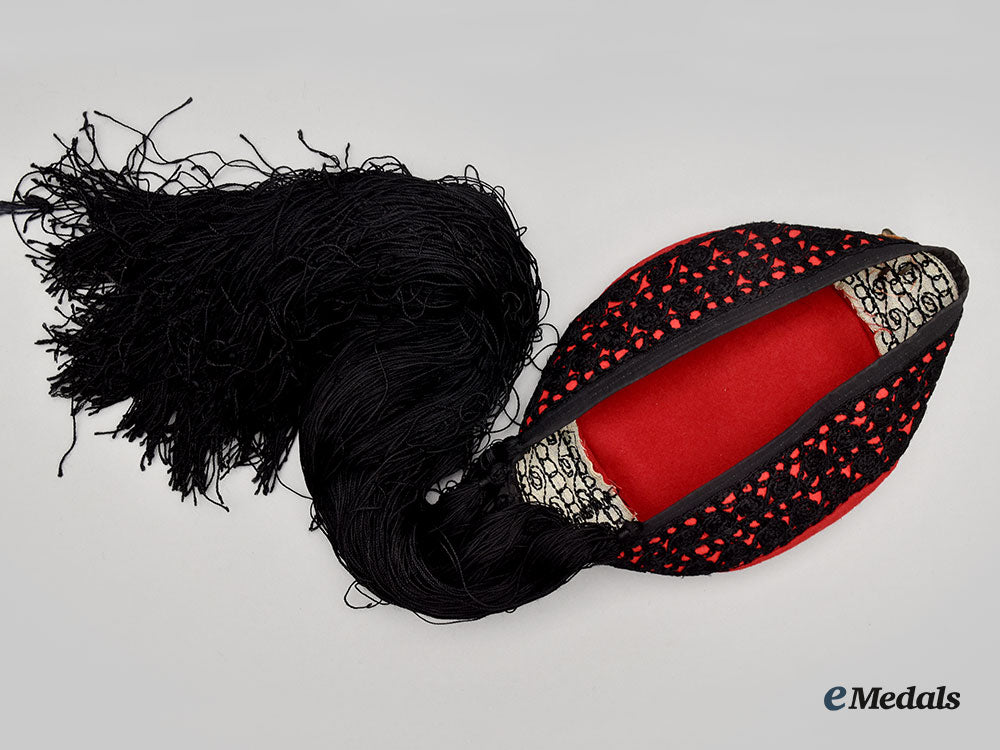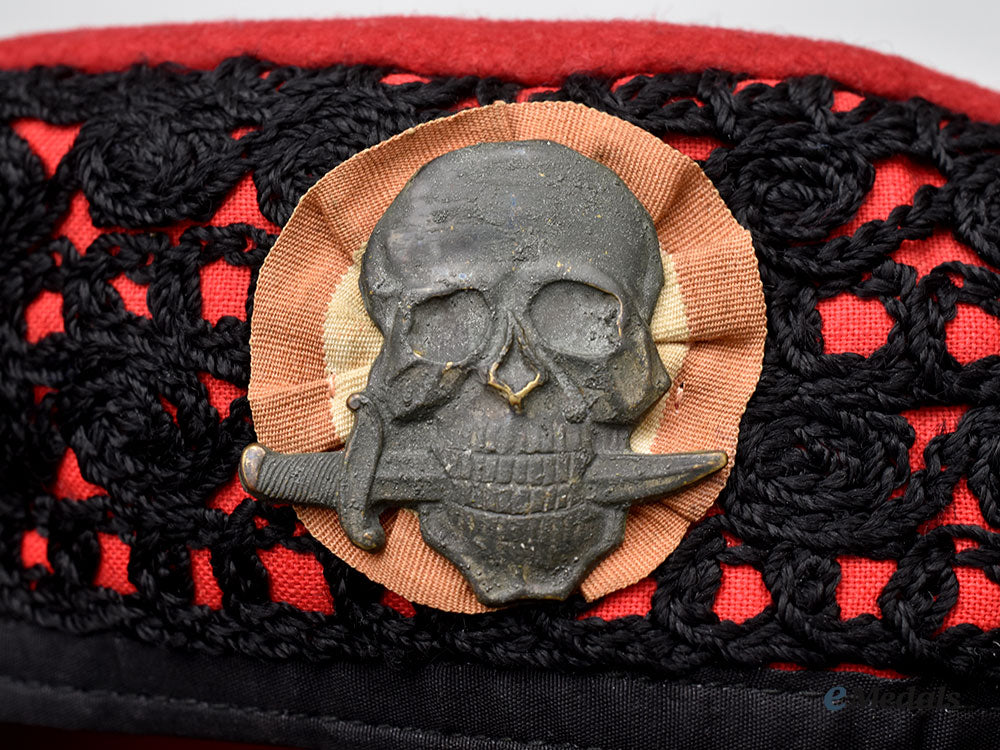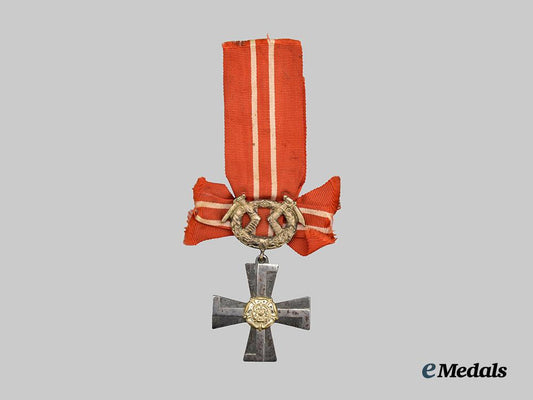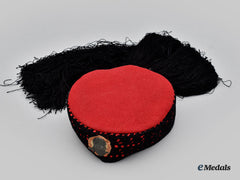
LOADING ...
In response to evolving domestic opinion, eMedals Inc has made the conscious decision to remove the presentation of German Third Reich historical artifacts from our online catalogue. For three decades, eMedals Inc has made an effort to preserve history in all its forms. As historians and researchers, we have managed sensitive articles and materials with the greatest of care and respect for their past and present social context. We acknowledge the growing sentiments put forth by the Canadian public and have taken proactive actions to address this opinion.
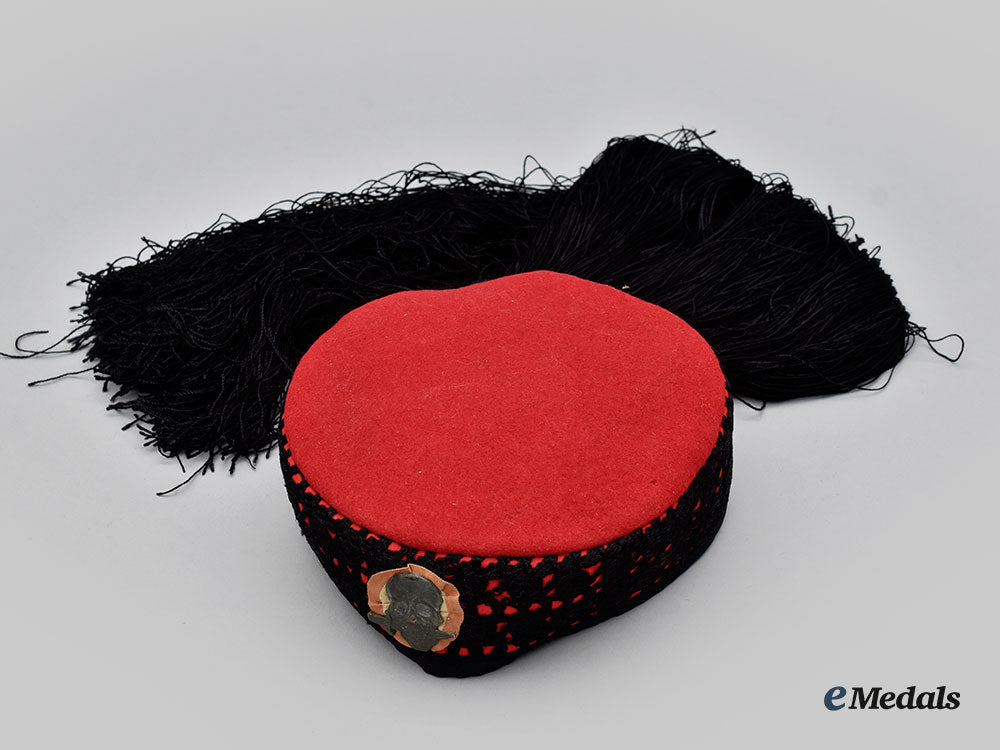
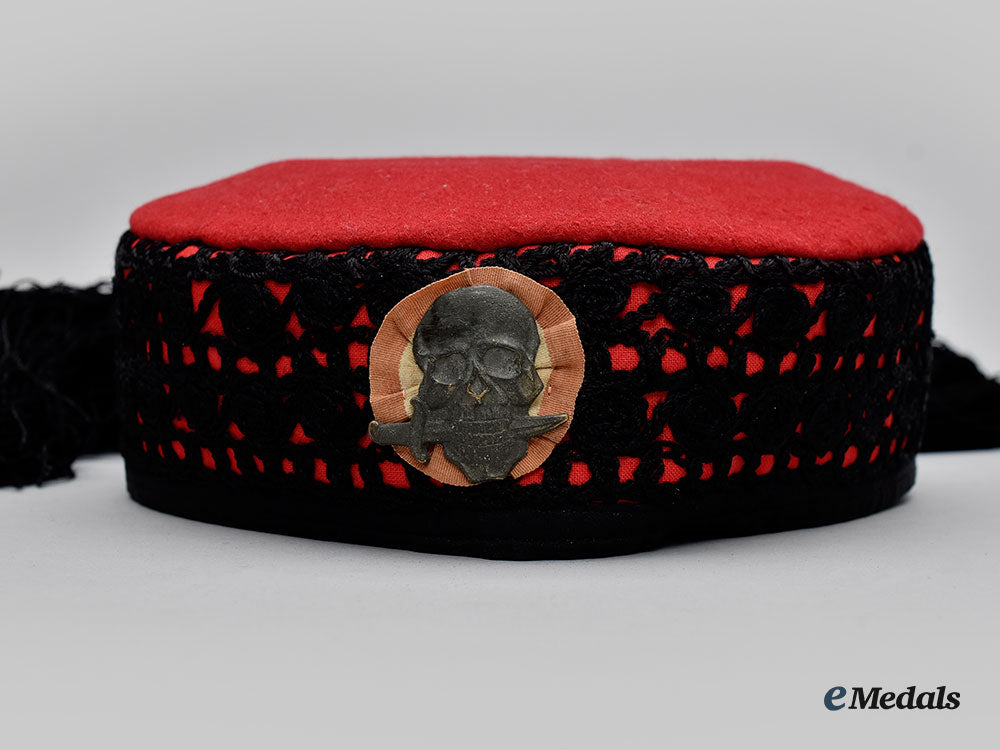
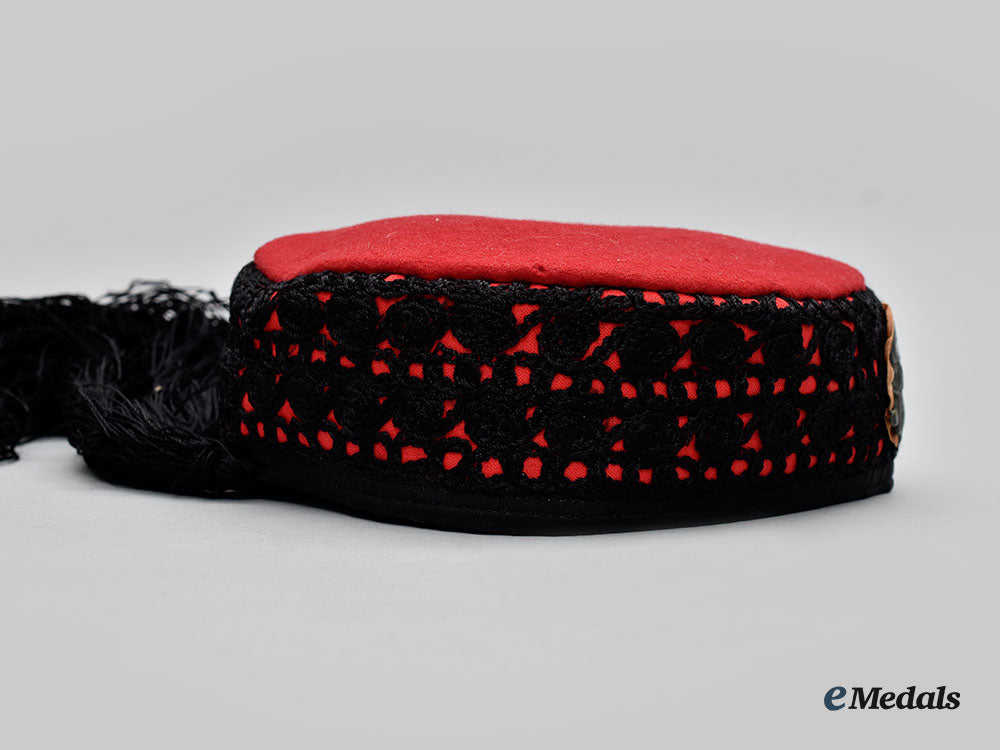
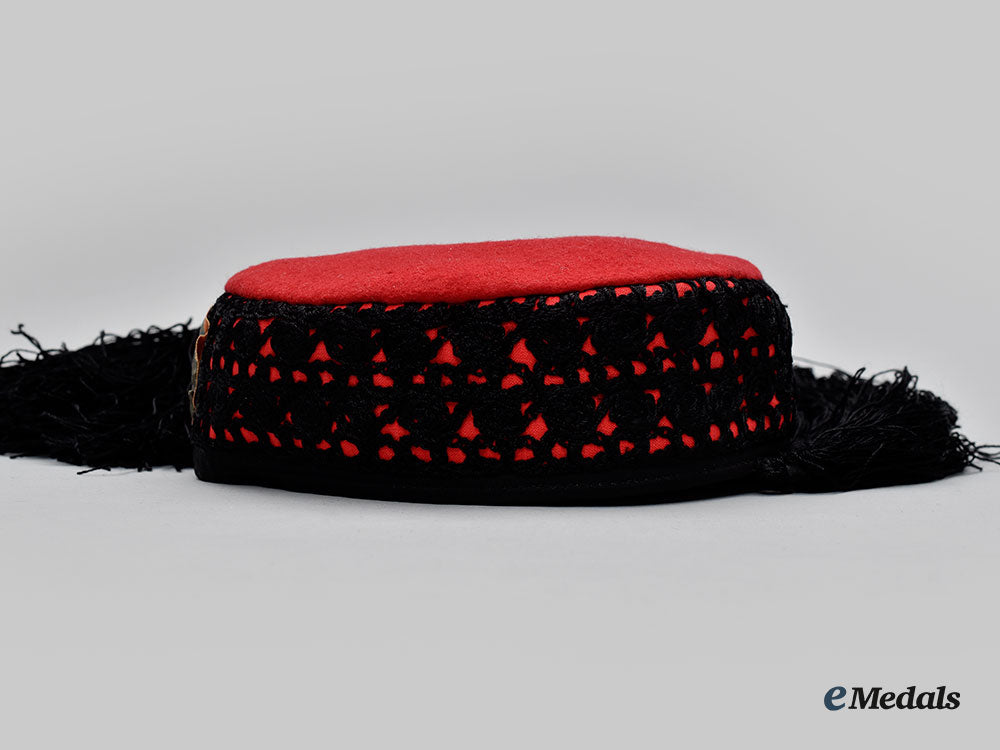
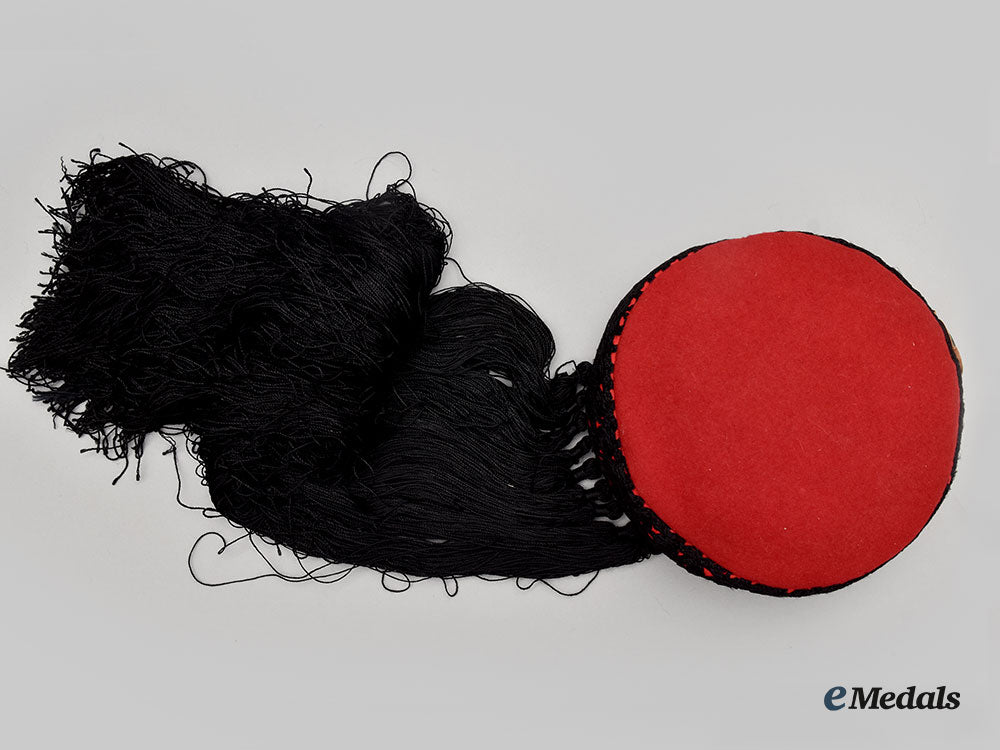
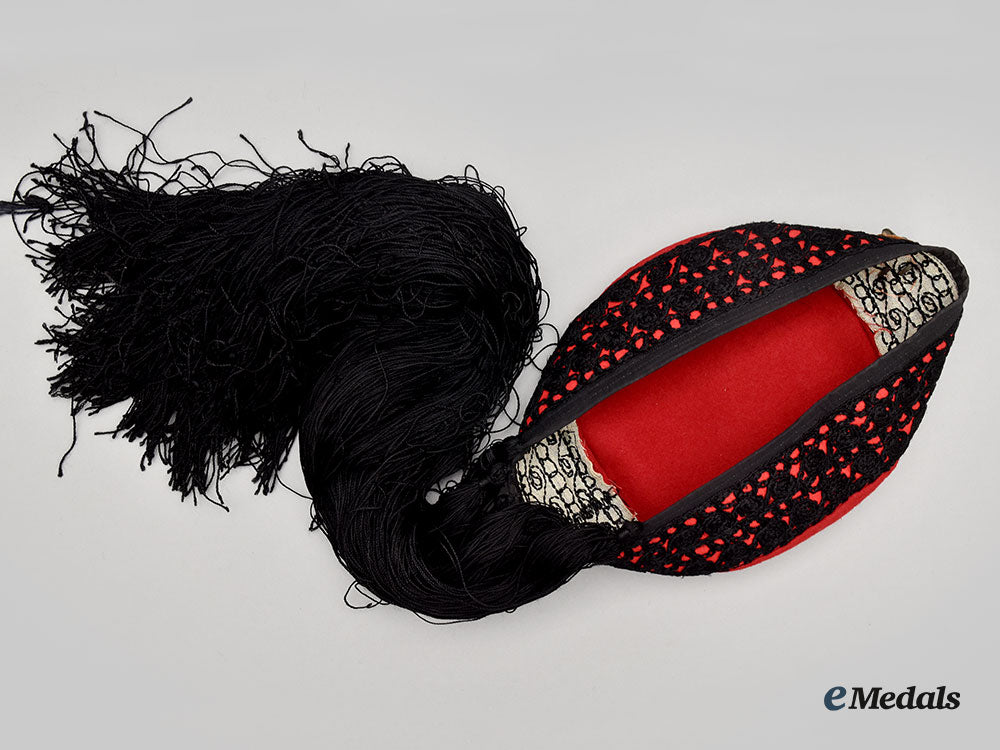
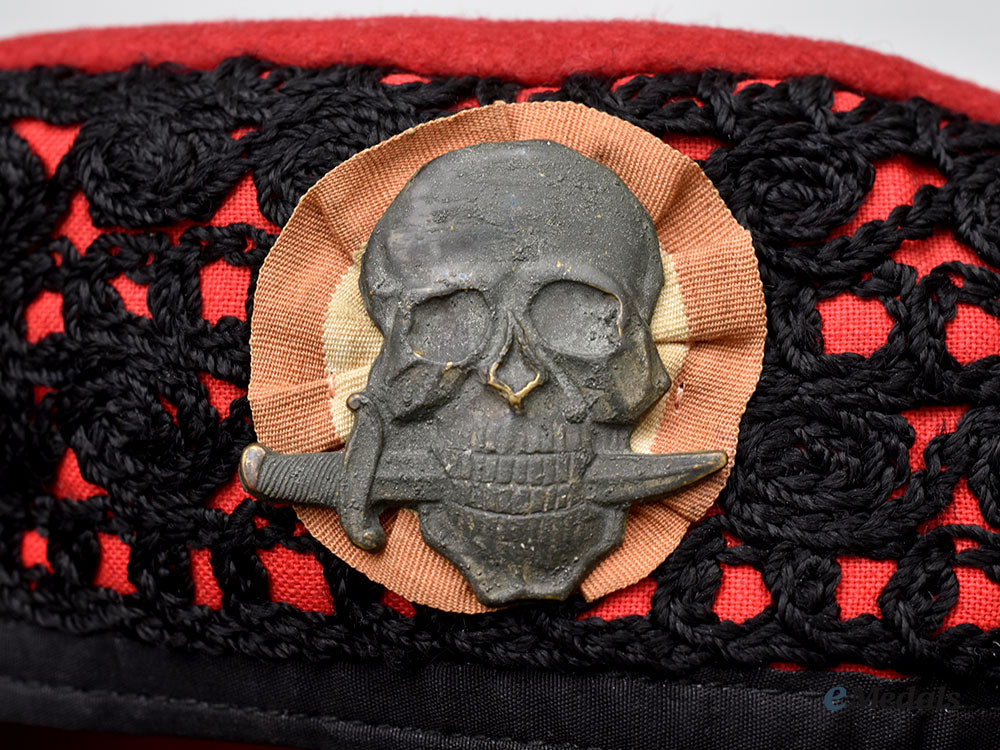
Italy, Kingdom. A Rare Serbian Police Collaboration In Dalmatia With The Royal Italian Army Anti-Communist Volunteer Militia Cap, C.1941
Italy, Kingdom. A Rare Serbian Police Collaboration In Dalmatia With The Royal Italian Army Anti-Communist Volunteer Militia Cap, C.1941
SKU: ITEM: EU20861
Current Bid:
Your Max Bid:
Bid History:
Time Remaining:
Couldn't load pickup availability
Shipping Details
Shipping Details
eMedals offers rapid domestic and international shipping. Orders received prior to 12:00pm (EST) will be shipped on the same business day.* Orders placed on Canadian Federal holidays will be dispatched the subsequent business day. Courier tracking numbers are provided for all shipments. All items purchased from eMedals can be returned for a full monetary refund or merchandise credit, providing the criteria presented in our Terms & Conditions are met. *Please note that the addition of a COA may impact dispatch time.
Shipping Details
eMedals offers rapid domestic and international shipping. Orders received prior to 12:00pm (EST) will be shipped on the same business day.* Orders placed on Canadian Federal holidays will be dispatched the subsequent business day. Courier tracking numbers are provided for all shipments. All items purchased from eMedals can be returned for a full monetary refund or merchandise credit, providing the criteria presented in our Terms & Conditions are met. *Please note that the addition of a COA may impact dispatch time.
Description
Description
(Milizia Volontaria Anti Comunista). The top of the cap is manufactured from red wool, with the sidewall in red cotton and exhibiting a black embroidered motif on the side panel around the circumference of the cap, the motif consisting of two rows of conjoined swirls, flanked by three rows of conjoined loops, one of which is in the centre between the rows of conjoined swirls, the other two placed along the outer edges of the conjoined swirls. The red cotton sidewall is backed by a white and gray thatched cotton twill backer, the cap trimmed in a 10 mm wide black rayon strip at the opening. Affixed to the front is a Anti-Communist Volunteer Militia badge in zinc, secured in place by dual prongs visible on the underside, traces of the original gilded finish remaining on the insignia around the eye sockets and nose framework on the skull, along with the tip of the handle and the point on the sword, the badge measuring 37.5 mm (w) x 36.7 mm (h) and is backed by a red and white embroidered circular rosette. Stitched in place to the black rayon strip at the rear of the cap and suspended accordingly are eight tassels, each of which is composed of multiple strands in very long black twisted rayon. The interior has a faded production mark or name in black ink evident in the dome. The cap measures 160 mm in width x 170 mm in depth x 60 mm in height, with one small hole evident in the red wool on the top left side near the front, the cap free of mothing and discolouration overall, with no interruption in the fabrics. Extremely fine.
Footnote: The Anti-Communist Volunteer Militia (Italian: Milizia Volontaria Anti Comunista, MVAC; Slovene: prostovoljna protikomunistična milica, also bela garda or belogardisti, pejorative = 'white guard'; Serbo-Croatian: Добровољачка антикомунистичка милиција, ДАМ / Dobrovoljačka antikomunistička milicija, DAM) were paramilitary auxiliary formations of the Royal Italian Army, composed of Yugoslav anti-Partisan groups in the Italian-annexed and occupied portions of the Kingdom of Yugoslavia during the Second World War. Colloquially known as Bande or Bande VAC after the Italian military term for irregular forces normally composed of foreigners or natives, anti-communist MVAC formations in occupied Yugoslavia were composed mainly of anti-communist Slovenians, Serbs, Bosnian Muslims, Croats and Montenegrins, as well as some Italians. As auxiliaries to regular Italian military units, MVAC units participated in guerrilla actions against communist Yugoslav Partisan forces in Slovenia, Dalmatia, Lika, Montenegro, Bosnia, and Herzegovina. Employed by the Italians from 1941 to 1943, Yugoslav MVAC units were utilized for their fighting ability, as well for their knowledge of the local language and terrain. The MVAC lacked a clear conventional command and control structure and was to a greater extent a loose arrangement of disparate armed groups aligned in common interests to counter communist guerrillas in their respective areas of operations.
Description
(Milizia Volontaria Anti Comunista). The top of the cap is manufactured from red wool, with the sidewall in red cotton and exhibiting a black embroidered motif on the side panel around the circumference of the cap, the motif consisting of two rows of conjoined swirls, flanked by three rows of conjoined loops, one of which is in the centre between the rows of conjoined swirls, the other two placed along the outer edges of the conjoined swirls. The red cotton sidewall is backed by a white and gray thatched cotton twill backer, the cap trimmed in a 10 mm wide black rayon strip at the opening. Affixed to the front is a Anti-Communist Volunteer Militia badge in zinc, secured in place by dual prongs visible on the underside, traces of the original gilded finish remaining on the insignia around the eye sockets and nose framework on the skull, along with the tip of the handle and the point on the sword, the badge measuring 37.5 mm (w) x 36.7 mm (h) and is backed by a red and white embroidered circular rosette. Stitched in place to the black rayon strip at the rear of the cap and suspended accordingly are eight tassels, each of which is composed of multiple strands in very long black twisted rayon. The interior has a faded production mark or name in black ink evident in the dome. The cap measures 160 mm in width x 170 mm in depth x 60 mm in height, with one small hole evident in the red wool on the top left side near the front, the cap free of mothing and discolouration overall, with no interruption in the fabrics. Extremely fine.
Footnote: The Anti-Communist Volunteer Militia (Italian: Milizia Volontaria Anti Comunista, MVAC; Slovene: prostovoljna protikomunistična milica, also bela garda or belogardisti, pejorative = 'white guard'; Serbo-Croatian: Добровољачка антикомунистичка милиција, ДАМ / Dobrovoljačka antikomunistička milicija, DAM) were paramilitary auxiliary formations of the Royal Italian Army, composed of Yugoslav anti-Partisan groups in the Italian-annexed and occupied portions of the Kingdom of Yugoslavia during the Second World War. Colloquially known as Bande or Bande VAC after the Italian military term for irregular forces normally composed of foreigners or natives, anti-communist MVAC formations in occupied Yugoslavia were composed mainly of anti-communist Slovenians, Serbs, Bosnian Muslims, Croats and Montenegrins, as well as some Italians. As auxiliaries to regular Italian military units, MVAC units participated in guerrilla actions against communist Yugoslav Partisan forces in Slovenia, Dalmatia, Lika, Montenegro, Bosnia, and Herzegovina. Employed by the Italians from 1941 to 1943, Yugoslav MVAC units were utilized for their fighting ability, as well for their knowledge of the local language and terrain. The MVAC lacked a clear conventional command and control structure and was to a greater extent a loose arrangement of disparate armed groups aligned in common interests to counter communist guerrillas in their respective areas of operations.
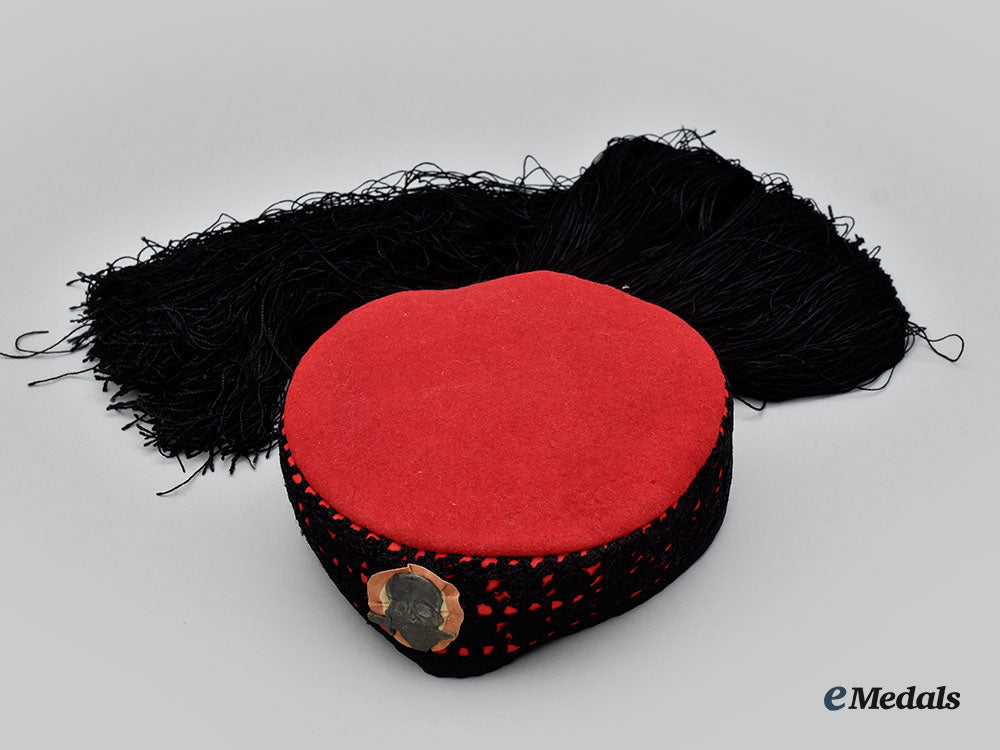
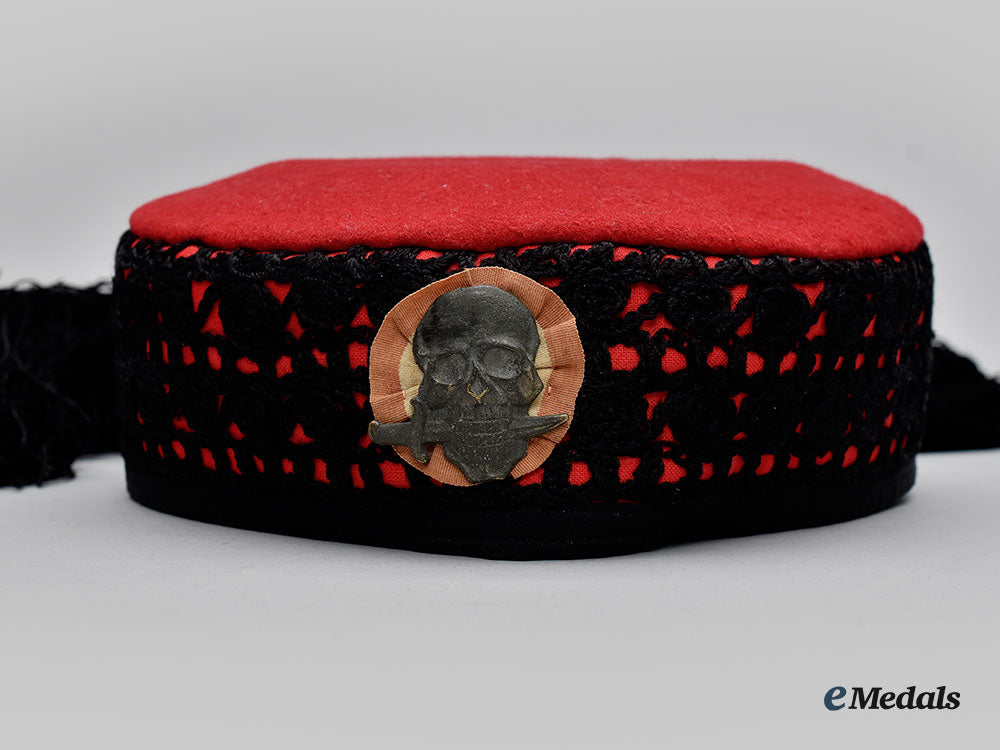
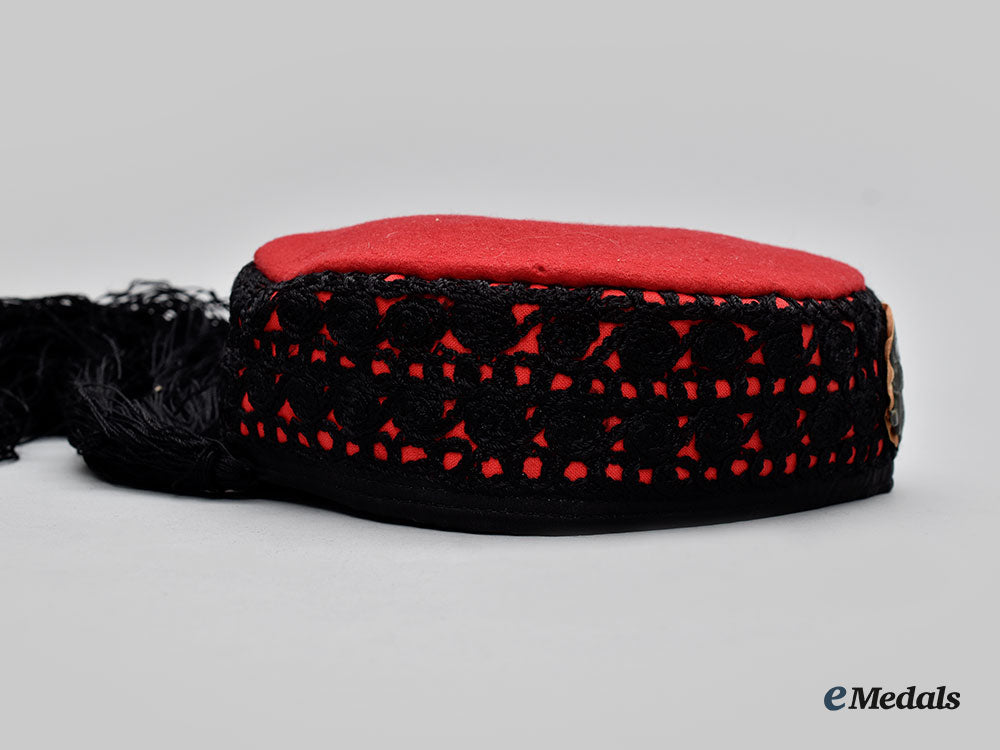
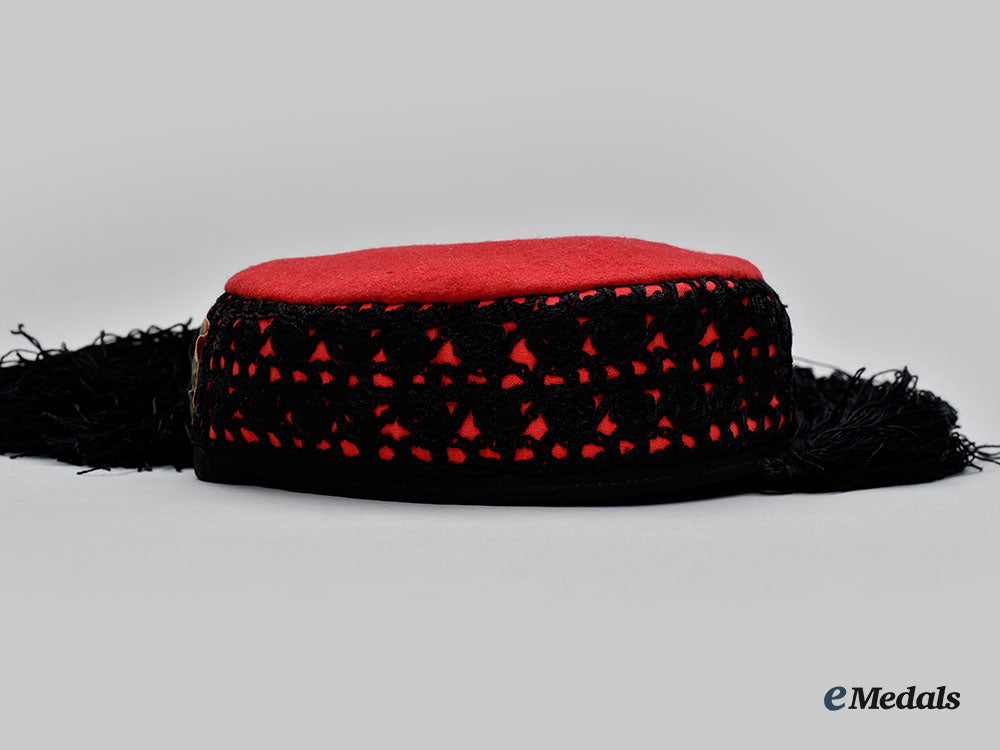
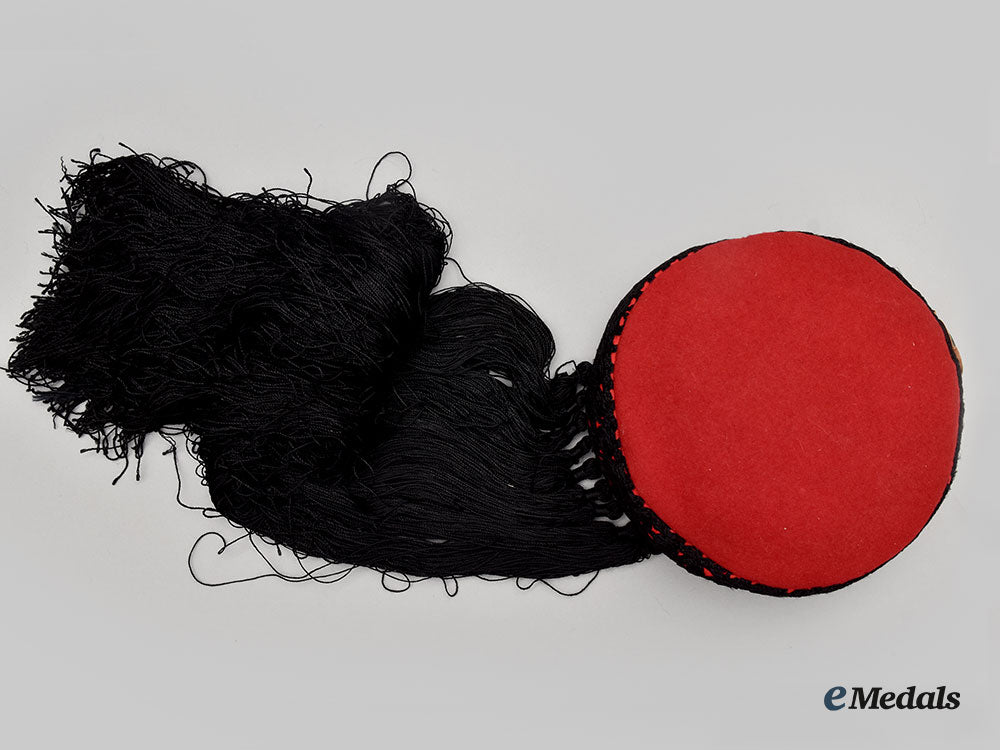
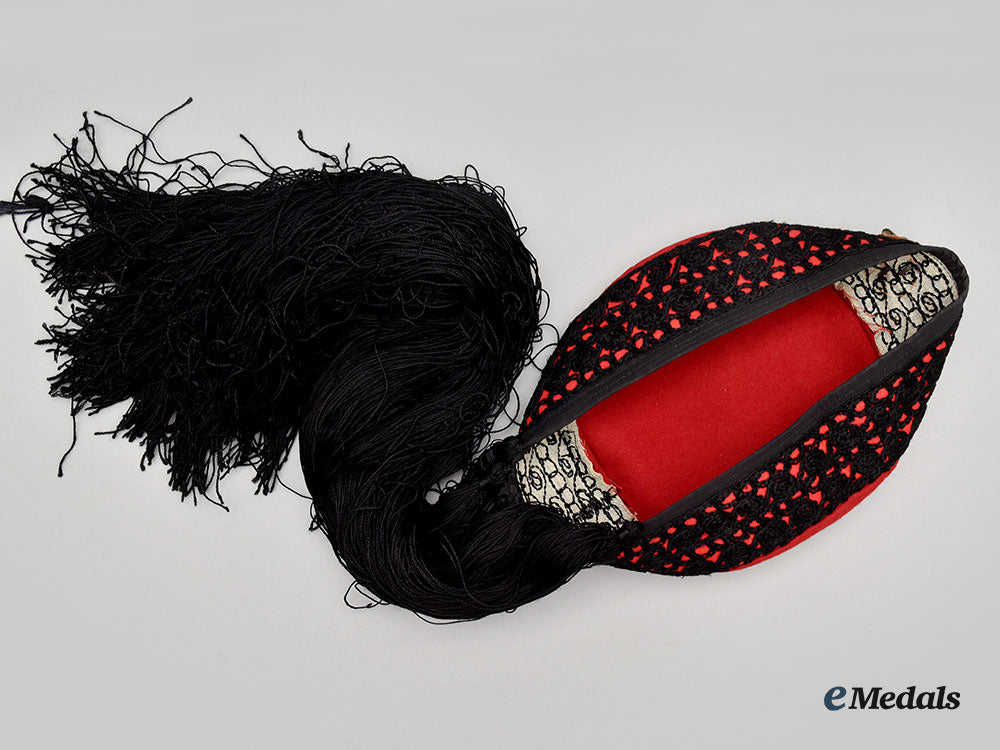
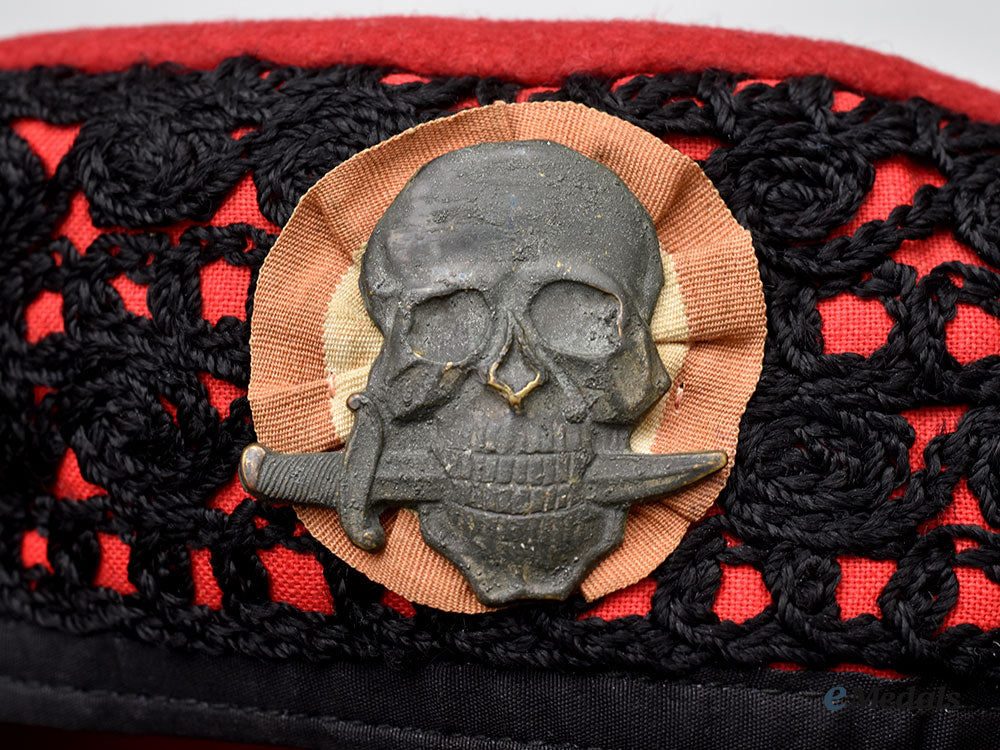
You May Also Like
Spain, Spanish State. A Medal of the Russian Campaign, with Case, by Diez y Campañia
EU24085
Austria-Hungary, Empire. A Rare Sturmbataillon 106 Personnel Badge
EU24086
France, Free Country Of Burgundy. An Order Of Saint George Of Burgundy, Embroidered Breast Star, C. 1925
EU19677
Russia, Imperial. A Russo-Japanese War Period Group Photograph, c. 1904–1910
EU23370
Finland, Republic. An Order Of The Cross Of Liberty, IV Class 1941, Military Division
EU24024
-
Spain, Spanish State. A Medal of the Russian Campaign, with Case, by Diez y Campañia
EU24085
Add to CartRegular price $340 USDRegular price $0 USD Sale price $340 USDUnit price / per -
Austria-Hungary, Empire. A Rare Sturmbataillon 106 Personnel Badge
EU24086
Add to CartRegular price $675 USDRegular price $0 USD Sale price $675 USDUnit price / per -
France, Free Country Of Burgundy. An Order Of Saint George Of Burgundy, Embroidered Breast Star, C. 1925
EU19677
Add to CartRegular price $330 USDRegular price $0 USD Sale price $330 USDUnit price / per -
Russia, Imperial. A Russo-Japanese War Period Group Photograph, c. 1904–1910
EU23370
Add to CartRegular price $340 USDRegular price $0 USD Sale price $340 USDUnit price / per -
Finland, Republic. An Order Of The Cross Of Liberty, IV Class 1941, Military Division
EU24024
Add to CartRegular price $200 USDRegular price $0 USD Sale price $200 USDUnit price / per
Do you have a similar item you are interested in selling?
Please complete the form and our client care representatives will contact you.
Sell Item